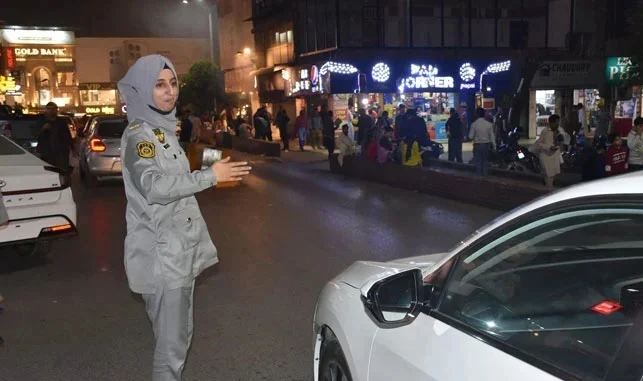ISLAMABAD, NOV 20 /DNA/: Islamabad Traffic Police (ITP) recently announced an ambitious move to introduce an E-Tag system across the federal capital, along with the establishment of seven dedicated checking points to regulate and streamline vehicle movement. On paper, the initiative is both timely and necessary, especially considering the rising number of vehicles, frequent VIP movements, and increasing security sensitivities in the capital. However, despite its promising design, the implementation so far remains disappointing.
According to the official announcements, the E-Tag points were meant to function as permanent stations where motorists could be screened, verified and issued E-Tags on the spot. The idea was to create a seamless, technology-driven system that would reduce manual checking, cut unnecessary traffic stops, prevent long queues, and strengthen security. But the situation on the ground appears starkly different.
Several motorists report that none of the seven announced E-Tag points are fully operational. What seems to be happening instead is a pattern: the police set up a point, shoot the necessary video footage, circulate it to the higher-ups to show “progress”, and then pack up and disappear. The practice not only questions the seriousness behind the initiative but also creates confusion among the public, who arrive expecting a functional service and leave disappointed.
One such E-Tag point was briefly seen operating at F-9 Park, a location strategically important due to its centrality and traffic volume. Yet within a few days, the point vanished—reportedly because the rush of vehicles caused congestion. Instead of improving the system to handle the rush, the authorities appeared to simply shut it down. This raises a fundamental concern: if the system cannot withstand public response even in its initial phase, how will it function citywide?
Every few days, press releases are issued proudly announcing the setup of E-Tag checkpoints. But these announcements rarely match the on-ground reality. Motorists driving to the supposed points find no staff, no equipment, and no mechanism to obtain an E-Tag. The inconsistency between statements and actual service delivery undermines public trust and wastes valuable time.
Despite the flawed execution, the policy itself is undeniably a good and forward-looking step. E-Tags can significantly ease traffic burdens, especially during rush hours and VIP movements. They can save police manpower, reduce unnecessary roadblocks, and enhance overall security with automated verification systems. For these reasons, the ITP must revisit its implementation strategy rather than abandoning or half-heartedly executing the project.
Islamabad’s traffic management challenges are growing by the day. The E-Tag system can be a transformative solution if implemented with seriousness and continuity. The authorities must now move from symbolic activity to practical delivery—because good reforms only matter when executed well.
















